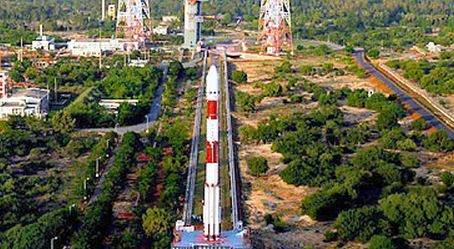India Makes a Serious Bid to Become a Space Power -- Again
| Arthur Dominic Villasanta | | Jul 11, 2014 05:36 AM EDT |
India, one of only three Asian states capable of launching spacecraft, said it had earned US$69 million launching 15 foreign satellites from 2011 until the end of June.
The amount, while seemingly impressive, is a mere 0.02 percent of the world's US$304 billion annual space business dominated by the US.
Like Us on Facebook
A combination of commercial and geopolitical aims is intended to launch India's latest bid to be recognized as a true space power.
On the commercial front, India launched 15 foreign satellites and 14 Indian satellites during fiscal years 2011-2014.
On the geopolitical front, Indian Prime Minister Narendra Modi has promised to turn India into a space power to contend with as part of his campaign promise to restore India's influence as a regional power to counterbalance China.
Modi is also billing himself as a champion of Asian countries and has called on India's space industry to develop a satellite that will be shared with neighboring Asian nations "as a gift from India."
Science and Technology Minister Jitendra Singh said the Department of Space has revealed its plan for India's space program until 2020.
The plan includes the development of advanced launch vehicle systems; orbiting earth observation satellites with improved photo resolution; deploying a constellation of regional navigation satellites and building high-power, high-throughput communication satellites.
The satellite projects will be the responsibility of the Indian Space Research Organization (ISRO), India's space agency. The main objective of ISRO, which counts among the largest government space agencies in the world, is to advance space technology and use its applications for India's benefit.
In June, ISRO launched five foreign satellites that included Spot-7, a high-resolution earth-observation satellite belonging to Airbus Defense & Space Company.
It also carried four other smaller satellites: NLS7.1 and NLS7.2 from the University of Toronto Institute for Aerospace Studies' Space Flight Laboratory; VELOX-1 from Nangyang Technological University, Singapore and AISAT from the German Aerospace Center.
India's aggressive moves in the commercial launch sector reinforce its reputation as a low-cost alternative for orbiting satellites.
India spends US$1.1 billion annually on its space program. It currently has 20 in-orbit communication and remote sensing satellites.
©2015 Chinatopix All rights reserved. Do not reproduce without permission
EDITOR'S PICKS
-

Did the Trump administration just announce plans for a trade war with ‘hostile’ China and Russia?
-

US Senate passes Taiwan travel bill slammed by China
-

As Yan Sihong’s family grieves, here are other Chinese students who went missing abroad. Some have never been found
-

Beijing blasts Western critics who ‘smear China’ with the term sharp power
-

China Envoy Seeks to Defuse Tensions With U.S. as a Trade War Brews
-

Singapore's Deputy PM Provides Bitcoin Vote of Confidence Amid China's Blanket Bans
-

China warns investors over risks in overseas virtual currency trading
-

Chinese government most trustworthy: survey
-

Kashima Antlers On Course For Back-To-Back Titles
MOST POPULAR
LATEST NEWS
Zhou Yongkang: China's Former Security Chief Sentenced to Life in Prison

China's former Chief of the Ministry of Public Security, Zhou Yongkang, has been given a life sentence after he was found guilty of abusing his office, bribery and deliberately ... Full Article
TRENDING STORY

China Pork Prices Expected to Stabilize As The Supplies Recover

Elephone P9000 Smartphone is now on Sale on Amazon India

There's a Big Chance Cliffhangers Won't Still Be Resolved When Grey's Anatomy Season 13 Returns

Supreme Court Ruled on Samsung vs Apple Dispute for Patent Infringement

Microsoft Surface Pro 5 Rumors and Release Date: What is the Latest?










